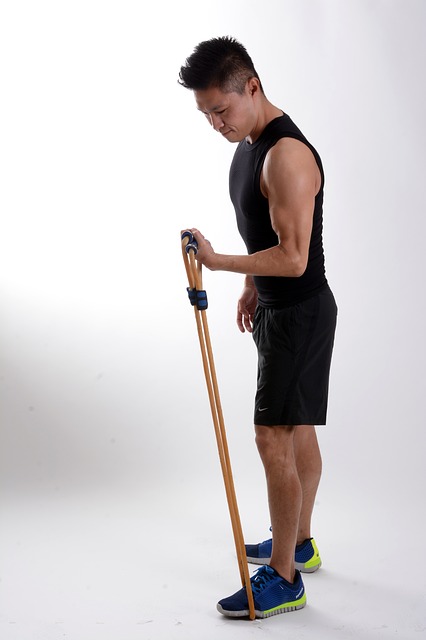
There are a number of advantages to using resistance bands as part of your training. The obvious ones being their low costs and ease of carrying everywhere with you, making them the perfect travel companion. They are a great addition to any resistance training routine or active recovery program and come in a wide range of sizes, strengths and colours.
Keep the Tension
When using Power Bands, every part of both the concentric and eccentric part of the exercise has resistance. This results in a better range of motion, keeping the muscles stimulated for the entire movement.
The ascending resistance activated when using resistance bands increases as your range of motion increases, and will increase your overall work output over using free weights or body weight. The ascending resistance also allows movement velocity to change and be accelerated which is exactly how the body increases power in movements.
You can use resistance bands with slow movements to accentuate the tension on your muscles, or speed it up to help develop the quick fire muscle fibres and improve your explosiveness and power production.
Keep it Simple
You can often use familiar strength training exercises and movements with your resistance bands so that you don’t need to learn a whole new routine of exercises specific to the equipment, as is the case with something like starting off with kettlebells.
Resistance bands can replace weights for exercises like bicep curls, squats, and chest press. You can do exercises for the whole body on the spot.
Add Variety
Your muscles quickly adapt to training programs so it’s a good idea to continually change things up and keep your body guessing, as they say. Throwing in new pieces of equipment and exercises, such as using resistance bands, are a great way to throw your body off and give it new challenges to adapt to and strengthen.
Resistance bands can be used as a substitute to free weight exercises, as complimentary or warm-up exercises or as additional ‘burn out’ exercises.
Make the Bands Work
Time your sets, and keep yourself working continuously for set times rather than performing the traditional three sets of ten repetitions. Pause your reps, stopping at the top of the exercise to get the most out of the optimal point of resistance. Focus on controlling each movement, rather than letting the bands flop around and pull you in each directions.
Over-Training
There are a few fitness professionals out there these days talking about the benefits of over-training. By its semantic nature, the term overtraining initially brings to mind negative connotations. However doing some short, evening, additional training sessions to supplement your weight training can provide huge breakthroughs to plateaus you might be facing.
If, for example, you are looking to build bigger arms, try doing resistance band arm exercises late at night on days where you are not training or recovering. For example, if you do a weekly arm workout on a Wednesday, then try doing some resistance band over-training on Friday to Monday nights.
Using resistance bands are a great way to warm up your muscles with low resistance bands, or to use as a replacement for weight training to change your routine up. They are simple to use and don’t require specific training so they are a perfect addition to anyone’s routine of various levels of fitness.
You can use them to train anywhere, so throw them in your bag and get some additional training in whenever you have a free half hour at the office, or when travelling on the road. With a few good quality resistance bands, there’s no reason to skip your daily workout.


